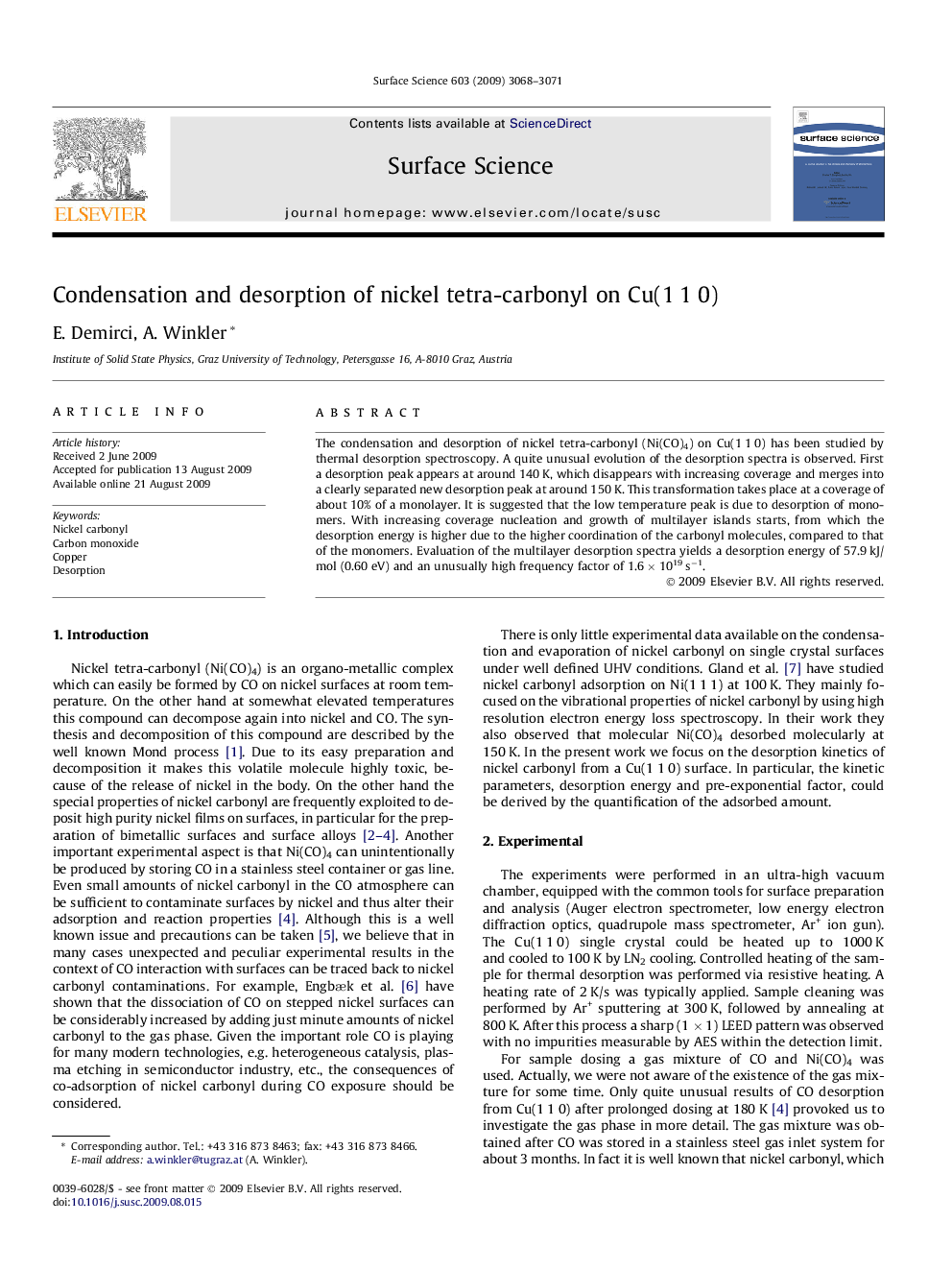| Article ID | Journal | Published Year | Pages | File Type |
|---|---|---|---|---|
| 5424457 | Surface Science | 2009 | 4 Pages |
Abstract
The condensation and desorption of nickel tetra-carbonyl (Ni(CO)4) on Cu(1Â 1Â 0) has been studied by thermal desorption spectroscopy. A quite unusual evolution of the desorption spectra is observed. First a desorption peak appears at around 140Â K, which disappears with increasing coverage and merges into a clearly separated new desorption peak at around 150Â K. This transformation takes place at a coverage of about 10% of a monolayer. It is suggested that the low temperature peak is due to desorption of monomers. With increasing coverage nucleation and growth of multilayer islands starts, from which the desorption energy is higher due to the higher coordination of the carbonyl molecules, compared to that of the monomers. Evaluation of the multilayer desorption spectra yields a desorption energy of 57.9Â kJ/mol (0.60Â eV) and an unusually high frequency factor of 1.6Â ÃÂ 1019Â sâ1.
Related Topics
Physical Sciences and Engineering
Chemistry
Physical and Theoretical Chemistry
Authors
E. Demirci, A. Winkler,
